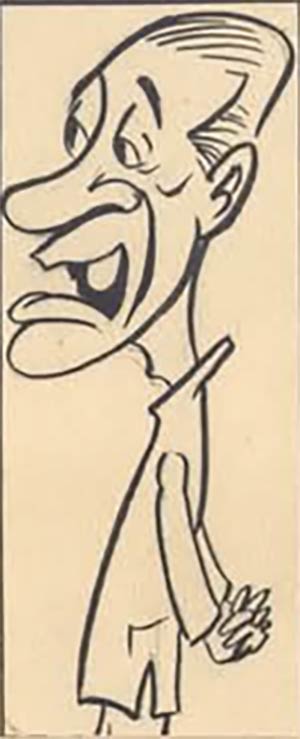Features
Lest They be Forgotten – Dhun Daruwala – Aviator Extraordinaire

by Capt Elmo Jayawardena
Flight Engineer Instructor Dhun Daruwala trained most of the pilots who joined Airlanka to fly the Tristars. These so trained fledglings went on to command big jet aeroplanes on wide-spread international routes. This is a remembrance of appreciation and gratitude. A recollection of times gone by lest such be forgotten.
Dhun Daruwala was born in India. He got into the world of aviation the hard way. He was an apprentice mechanic in Air India getting baptized in the grease and spanner brigade. From there he went on to work on DC-3s and Pratt and Whitney engines as a ground engineer. Next was a big step when Dhun was selected to be trained as a flight engineer in the fleet of Lockheed Constellations that Air India purchased. Dhun then climbed the spiral staircase to become an instructor in management.
He left Air India and joined Singapore Airlines, the Valhalla of all aircrew in the seventies. There he made his name as a pure professional among the vast number of pilots and engineers who flew the ‘yellow bird’ tailed jets of SIA. The expatriate community in the airline was massive, maybe 60 nationalities. Dhun Daruwala was a star among them.
Dhun left Singapore to seek a smaller pasture
It was in early 1980 that Daruwala arrived in Sri Lanka to join the fledgling airline, Airlanka. By that time Dhun was a well-known name in aviation, having had his baptism in Air India followed by his services for Singapore Airlines. He was a veteran professional, having flown various types of passenger turbo props and jets. I distinctly remember him flying the Airlanka 707 when there were just two aeroplanes in the new airline. It was also the beginning of my life-long friendship with him and his family, Maja, Raoul and Jana.
Dhun was a ‘God sent’ gift to Airlanka in those early days. He was a very experienced Flight Engineer and a brilliant instructor. Airlanka was stepping out into the international aviation scene, and we had a whole line of young aviators joining the company to fly big jets.
Most of them came straight from flying schools and needed to be tinkered and shaped and injected with the essence of being competent crew members. That was Dhun’s job where he probably trained everyone who joined fresh to fly the third pilot seat on Lockheed Tristars.
Dhun, who was fondly known as the ‘Grand Master’ taught them all and taught them well. Most of these young pilots went on to command international flights and successfully navigated their careers to become contented retirees. Bar none, they would all remember ‘Dhun’ the grand master, who set them straight in their aviation ‘Montessori’ days.
From 1980 onward Airlanka expanded rapidly adding Lockheed Tristars as the ‘main menu’ of the company’s fleet. Crew recruitment was constant and young local pilots with the basic qualification of a Commercial Pilot’s License (CPL) were recruited. Most had flown only light aeroplanes, Cessnas and Pipers and such. Training them from infancy to be professional operators in Lockheed Tristars was no mean feat. The instructors who carried out this Herculean task were all from the top shelf. Dhun Daruwala was among these few, who toiled tirelessly to make this transformation, converting altar boys to climb the pulpit and perform at the highest level.
I have flown in the front seats when Dhun was training new recruits. The Grand Master was nothing less than a ‘God Father’ to his trainees. I have never heard him raising his voice or adding sarcasm to ridicule a student. Such sterling qualities were not common factors in a cockpit. Dhun had it all, being one of the best instructors I have flown with in my entire career. No wonder he is so well remembered by his students and fellow crew members who shared his flight deck.
Whenever old Airlanka people gathered and reminisced about the days and events gone by, they never failed to mention the name ‘Dhun Daruwala’ with absolute awe and gratitude. Those who learnt under him never forgot how dedicated and disciplined Dhun was in the cockpit. His sense of humour was perpetual and original. He used to give Hindi phrases often too and I will never forget his “Jab Kuda Detha hay, tho par par ke detha hay” (When God gives, he gives in abundance). He sure was a live wire in the cockpit, better than the best I have flown with.
Yes, I flew with him when I was a first officer and later as a captain. I never had the privilege of being his student but was a fellow crew member on many occasions and for many years. For my last flight with Airlanka I requested crew scheduling to roster the Grand Master as my Flight Engineer and we flew to Singapore and back. That request was made with the deepest respect I had for my wonderful friend, Dhun. The final flight flown by a captain in any airline is very nostalgic. That is when the heart strings tighten, and tears brim the eye lids. At such times you need someone special to share your flight deck. I was blessed to have had Dhun with me to read the final shut-down check list on my last flight with Airlanka.
Dhun and I left Airlanka and joined Singapore Airlines. We were both recruited to fly Boeing 747s, Dhun as a flight engineer and me as a captain. Of course, we flew the big jumbo jets together in the vast international network of SIA. This time there were no trainees, and we enjoyed that heart-warming camaraderie flying long haul aeroplanes. Some of the most beautiful memories I have in flying are linked to having the Grand Master in my crew. He was like a hawk, looking over my shoulder at everything I did from the left seat. On easy cruises in clear skies, he always had his unending stock of humourous stories to keep us entertained. But at times of demand, I felt so comfortable having the Grand Master as my guardian angel making sure I did not make any mistakes.
Thank you, Dhun, for the safety you brought to my cockpit when we flew together. Not just me, but most captains who flew with you will certainly share that sincere sentiment.
The world got older, and we each followed our own paths to walk under different skies. Dhun settled in New Delhi and whenever I had a layover in Delhi, I never failed to visit the Grand Master.
He sure was living like a King. Maja was busy fighting battles for righteousness, Raoul was well settled in New York and Jana was there in Delhi to hold the fort. Dhun deserved everything he had. Our reunions were always enjoyable. Of course, the conversation was mostly about the aeroplanes we flew and the people who shared the cockpit with us. Then we talked about the ones departed, with somewhat sad reverence. The time just flew at Barber Pole speed, that is what happens when dear old friends meet. The interaction was delightful, yet if the truth be told, there was a smidgen of sorrow because we both missed flying together.
Dhun passed away on December 29, 2024. It is only at the going down of the sun we would know how beautiful the day has been. He breathed his last surrounded by family and loved ones. A winner to the very end.
We heard the sad news from Raoul by email. Dhun was three runs short of a century. But then, his was a great innings. Few had the fortune to bat so well and leave the pitch in such luminous glory.
Goodbye my friend, goodbye Grand Master.
(Email: elmojay1@gmail.com)
Features
Independence and its Detractors: The Coming of Age after 77 Years

by Rajan Philips
Political Coming of Age
Both the observance of Independence Day and its erstwhile detractors would seem to have come of age at last, after 77 years. Tongue in cheek commentators have been harping too much on the irony of a JVP-led government celebrating independence. But the JVP was not the first political organization to question the authenticity of the island’s independence in 1948. That honour goes to the LSSP, rather the BLPI, the LSSP’s more doctrinaire variant at that time and led by a formidable triumvirate of theoreticians – Colvin R de Silva, Leslie Goonewardene and Doric de Souza. They memorably called the 1948 independence “fake independence.” It became a part of the political rhetoric of the Left and the JVP gave it a new life among the younger generations of Sri Lankans.
But over time the ‘fake independence’ characterization faded away and after 1970 when the LSSP was part of the United Front government, Leslie Goonewardene formally acknowledged that the old characterization had not been wholly correct. Sri Lanka, he conceded, was able to exercise complete independence in spite of imperial checks in the areas of defense and external affairs, and constitutional limitations. Sri Lanka was able to do whatever its parliament and government wanted to do – the good, the bad and the ugly – all in equal measures. Finally, in 1972, Sri Lanka was able to discard its dominion status, adopt a whole new autochthonous constitution, and declare itself a republic.
Challenging Times
Now after 77 years of independence and 53 years as a republic, Sri Lanka has come a full circle with a JVP President presiding over independence day celebrations last February 4. The political coming of age, so to speak, after 77 years has come at a challenging time for the country. This year’s ceremonies have been described as modest with more cultural and less militaristic emphases. The once controversial Tamil version of the National Anthem was sung to mark the end of the ceremonies. A week earlier the President had visited Jaffna and by all accounts he endeared himself to the people and was well received by them.
In his Independence Day address, President AKD spoke about the many cleavages that are tearing Sri Lanka: “Not only … the ethnic, religious, and caste divisions, … (but also) the entrenched prejudices that exist between political representatives and the populace, between institutional leaders and their staff, between passengers and public transportation operators, between government employees and the citizens they serve, between educators and students, and so forth.”
Critics will cavil that the JVP itself in its earlier incarnations had contributed to aggravating some of these cleavages. But give the man plenty of credit, we have not had a recent president who could provide such an organic assessment of our sociopolitical problems and sincerely commit himself to addressing them. But the tasks on the President and his government are tall and unrelenting. The still new JVP President and the NPP government have been in office for a little over 77 days – following the November parliamentary election. Yet there are those who seem to insist that the new government should be held responsible for solving all the accumulated problems of 77 years in just 77 days.
For the sake of argument, the NPP itself may have contributed to this notion by its own insistent campaigning that nothing has been done right ever since independence, and that only a new NPP government that will put everything right for Sri Lanka. This premise was incorrect however attractive it may have been for polemical posturing. All that said, there is no question that there are pundits who are holding the current fledgling government to a far more stringent standard of accountability than they have held governments that have come and gone in recent past. With only 77 days on, a balanced accounting of the new government should look at not only what it has done or started doing, but also what it has not been able to do as well as what it has steadfastly refused to do. Let us take the last point first.
This government has distinguished itself from its many predecessors from choosing not to do a number of things. For starters, and this is a unique start for Sri Lankan politics (save for the 1956 SWRD government), there is no family in government. There is no nepotism in government appointments. There is no interference in police matters or in government procurement. There is nothing corrupt about this government, and the main criticism appears to be that the government is not moving fast enough, or it is being selective, or even revengeful, in taking action against past corruption and corrupters.
The Rajapaksa Princely State
Corruption comes in many forms. It is corrupt not only to take bribes but also to insist on entitlements that are inappropriate even if they are interpretively legal. Former presidents are entitled to their pensions and reasonable benefits. Should every one of them be given a rent-free mansion at prime locations in Colombo, with a long retinue of security and staffers, is a legitimate question to ask even if there is self-servingly passed legislation to support such post-presidential prodigality.
Prime Minister Indira Gandhi famously terminated the payment of privy purses to the ruling families of India’s erstwhile princely states and passed a constitutional amendment in 1971 to implement it. The courts approved it with the exception of some individual cases involving those who had held ruling powers before independence in 1947. It would seem that in the reckoning of at least one former president, Mahinda Rajapaksa, the whole island has once been his princely state. Hence, his claim to palatial entitlements in retirement.
President Dissanayake and the government should handle this matter not politically; but let government officials send a formal letter to the former president explaining why it is inappropriate for him to insist on this palatial entitlement but leave the matter of either vacating the property or claiming squatter rights entirely to Mr. Rajapaksa’s discretion. Leave it to him and his family to do the explaining to the people why he thinks he is entitled to this facility whereas every other retiring person has to make ends meet within the pension or EPF. And there is no assurance that people will get their pension or EPF after what he, his brothers and their economic whiz kids had done to the economy.
If at the time of independence, Sri Lanka had the Uncle Nephew Party (UNP), 77 years later there is a Sri Lanka Privy-Purse Party (SLPP). The positive difference is that the UNP was in power in 1948, but in 2025 the SLPP is out of power and the UNP is on life support. If the SLPP thinks it can claw back to power by making a public fight over the retirement mansion of its former president, so be it. And if the SJB thinks its fortunes will swell if it throws its support behind the Rajapaksa mansion-grab, so be it too!
The 1977 Legacies
In looking at what this government has done, has been doing, and has not done or not been able to do what needs to be done, we can invoke the year 1977 as a frame of reference. 1977 is a significant watershed year that marked the displacement of parliamentary democracy with executive presidency, created the so called open economy, and expanded irrigation and agriculture that led to self-sufficiency in rice production but subject to the vagaries of weather.
Year 1977 also saw the start of the riotous deterioration of ethno-communal relations and their rapid descent into open warfare. In foreign policy, the long (1977-1994) UNP government began with a sharp turn to the west, rebuffing India and abandoning non-alignment, but ended with the controversial Indo-Sri Lanka Agreement and the 13th Amendment that came appended to it.
The 1977 watermarks are significant in themselves, but they are doubly significant now because the NPP government has set itself up to be measured by what it may or may not do with the principal legacies of 1977. For instance, the government is committed to restoring parliamentary democracy and reforming the executive presidency. These changes are now expected to be implemented within three years, but there is no indication of how the political relationship between communities will be addressed in a new constitution even though the government should be commended for its sociopolitical approach in envisaging a ‘post-racial’ Sri Lanka. For now, let us give the government kudos for its intentions and time for their implementation.
The government will ultimately succeed or fail by how and what it does about the economy. So far, it has been steady in its start and going by the old wisdom the government must be getting it right inasmuch as it is being criticized by those who fancy themselves to be to the Left of the government and others who know that they are to its Right.
The President has set a target of achieving USD 36 billion from export earnings by 2030. While there is no way out of settling our foreign debt without export expansion, the government should be mindful that the USD 36 billion target needs to be supported by a detailed and feasible plan based on an identified export product mix and importing countries. Otherwise, it will turn out to be another tall talk like what Ranil Wickremesinghe did – promising one million jobs but doing nothing to create even one thousand identifiable jobs.
Within the economy, the rice situation has already become the pinch point. If it is not rice, it is coconuts, and even if they are imported they cannot be distributed immediately, because someone is not making customs official happy enough to do the work that they are paid for. The government seems duly concerned about these problems, but it is still trying to find a way out of the cycles of surpluses and shortages, let alone resolving them.
Notably, the government and especially President AKD are now realizing the huge data gap in the supply and distribution of rice, that some of us have been harping on recently. That is a good start, but there is not too much time for the government to assemble data and make decisions. The PMB, as some of us have argued could and should be used as a regulatory and data mining agency guiding the market rather than as a direct market actor competing with private rice millers. The PMB cannot be a regulator and competitor at the same time.
In foreign policy, the government would do well to use to its advantage the chaos that the new Trump administration is unleashing on the world, by staying below the radar and dealing with reliable partner countries to steer Sri Lanka’s foreign exchange economy to stability and reasonable success. The President has proved himself to be ambidextrous between India and China, and the challenge for the government is to leverage the competing geopolitical interests of the two Asian giants to advance Sri Lanka’s economic interests without being submerged by them.
One obvious challenge facing President AKD is about making clear that the NPP is a lot more than its executive president. People are yet to see the full cabinet in full flow. President AKD is easily one of the better, if not the best, executive presidents the country has had as measured by the attributes of comportment, collegiality, and being consultative. But even he needs to possess and project a team of equals who are similarly capable. One can only wish that the restoration of cabinet government will be achieved and matched by other positive advancements as the government completes one year in office before the 78th independence anniversary.
Features
Every ill does not need a pill

 Pharmaceutical drugs prescribed by medical specialists – doctors – are taken universally. This brand of medicine named allopathic medicine, also known as biomedicine, conventional/ mainstream /or orthodox medicine, is preferred to our native medicine or Ayurveda, by the majority of city folk. Till recently, ordinary people like me were unaware of the inherent danger in use and overuse of prescribed drugs and for every ill consulted a so called Western doctor.
Pharmaceutical drugs prescribed by medical specialists – doctors – are taken universally. This brand of medicine named allopathic medicine, also known as biomedicine, conventional/ mainstream /or orthodox medicine, is preferred to our native medicine or Ayurveda, by the majority of city folk. Till recently, ordinary people like me were unaware of the inherent danger in use and overuse of prescribed drugs and for every ill consulted a so called Western doctor.
As children in Kandy we were taken to consult either Dr Anthonisz or Dr Win in their dispensary just past the warren of lawyers’ office dens down a road close to the Dalada Maligawa; followed by Dr Frewin. Independent me consulted a wonderful woman GP and consulted a specialist (very rarely), only if she advised it. Dr Vimala Navaratnam was our family doctor for long. I joined a private medical service a couple of years back paying an annual fee (nominal) but a visit of a doctor and his team costs Rs 5,000/- .
Also like most Sri Lankans at the onset of anything unusual, I would make a bee line to a specialist doctor whose fee now has risen to almost Rs 5,000/-. With tests to be done or without, his prescribed drug list is usually long. Recently going to a specialist I was to take two histamines and another drug. The result of drug taking was much worse than the ill I suffered, which I must say abated.
A GP retired from England knew I was prescribed two drugs for an aching arm: a painkiller and the other to counteract probable resultant stomach imbalance. He laughed and advised me to let my body cure itself, aided by plenty water and mental calmness. It worked. It was then he said: “Every ill does not need a pill”, and added more deaths are caused by taking of unnecessary drugs and of course, overdoses.
Medical drugs can be killers
I quote here info gathered by googling, the input statement being ‘pharmaceutical drugs kill’: “Our prescription drugs are the third leading cause of death after heart disease and cancer in the US and Europe. Around half of those who die have taken their drugs correctly; the other half die because of errors, such as too high a dose or use of a drug despite contra-indications.”
“Prescription drugs kill 300% more Americans than illegal drugs; prescription drugs kill one person every 19 minutes; prescription drugs now kill more people than heroin and cocaine combined; prescription drugs are now killing more people than traffic accidents…”
Sadly, most people don’t know that properly prescribed prescription drugs kill people, contrary to what we are made to believe by the Big Pharma and their agents, the so called doctors. “In the USA for example, 100,000 Americans die as a result of drug use each year. This excludes prescription drug abuse, which causes this number to skyrocket even higher. This is more than or equal to the number of people who die from accidents, Alzheimer’s, Influenza and Diabetes.”
The Sri Lankan scene
I googled with searching statement ‘Deaths in Sri Lanka due to pharmaceutical drugs’.
Retrieved two articles. One is from the Sunday Times, July 23, 2023, titled Spotlight on recent incidents of deaths in state health sector. The article with table and statistics starts thus: “The Health Ministry appointed a seven member ‘Expert Committee’ to investigate the recent incidence of drug allergies and their after-effects…..” This article was an interview by Kumudini Hettiarachchi with the NMRA Chief. No need to go any further since now much is known about the allergies and death caused by bad drugs imported.
The second is an article issued by the Directorate of Healthcare Quality and Safety. It details a meeting of health personnel in Colombo to celebrate of World Patient Safety Day, in 2022, with theme ‘Medicine without Harm.’ WHO, in 2019, at its 72nd Assembly declared that annually on September 17, observance would be on promoting all aspects of patient safety.
At the meeting I read about, chief guest was then Health Minister Keheliya Rambukwella, and keynote speaker Prof Galappatty who addressed the gathering virtually from the UK; her topic: ‘Medication without Harm.’
It is the practice now for most well to do or even economically just managing people to go to specialists, she noted. Quoting an article published in the US, she said that about 44,000 -98,000 people died every year due to medical errors, defined as “adverse events or near-miss events that are preventable with the current state of medical knowledge. Of these approximately 7,000 are due to medication errors, which mean “any preventable event that may cause or lead to inappropriate medication use or patient harm while the medication is in the control of healthcare professionals, patient or consumer.”
In England she said, medication errors were more prevalent among older people who are on multiple medications. In Sri Lanka about 46% of the population have poor knowledge of medicine and about 8-12% are involved in self-medicating with allopathic medicines. She further noted that awareness creation about pharma medicines shout be a priority. A National Plan on Medication Safety was constituted under her initiative, covering the key domains proposed by WHO, namely systems and practices.
Observation
As said before, even if economically hard pressed for cash, specialist doctors are channeled for all illnesses deemed by the sufferers to be serious, though they often are not. The retired doctor from UK says the GP over there spends much time on a patient and does not prescribe drugs unless deemed absolutely essential. He adds that ‘pill pushing’ should be minimized by local doctors, GPs and specialists alike, and more consideration given to the patient’s purse and investigative tests ordered minimally. Patient education to be promoted.
A British visitor told me some years ago that what he noticed most on his first drive from Katunayake to Colombo was the abundance of pharmacies with drugs stocked almost spilling on the pavement. He also said that once he socialized with the locals, he noticed their almost universal shifting of conversations to illnesses they have, medicines they take. Yes, this seems to be a minor national trait.
My doctor friend is involved in spending much to help poor children in their education and in their food intake. He said let’s start a campaign to encourage people to take less drugs and resort to other methods of healing: mind conditioning, meditation, increased intake of water and of course recognizing the danger of even pharma drugs.
Features
The Ceylon Journal’s Second Issue: A Captivating Dive into Sri Lanka’s Rich History and Culture
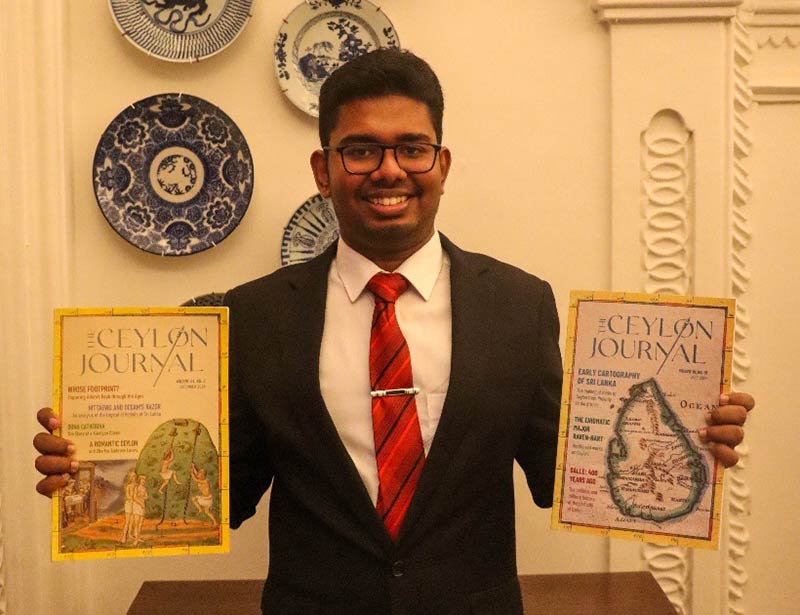
True to its promise of bringing a balanced mix of scholarly analysis and popular narrative, The Ceylon Journal‘s second issue was out just in time for the festive season. Following the successful launch of its first issue in August 2024, this new volume continues to cater to readers who cherish Sri Lanka’s past, culture, and ongoing legacy, offering fresh insights and compelling stories on a wide array of topics.
From the rise and fall of the island’s rubber industry to the mystical legends of Sri Lankan cryptids, this issue further solidifies The Ceylon Journal as the go-to publication for all those fascinated by the island’s past. In its second issue, the journal effortlessly blends historical research with vibrant storytelling, providing a comprehensive look at Sri Lanka’s history, culture, and societal transformations.
The Ceylon Journal: An Editorial Evolution
One of the most exciting developments in The Ceylon Journal’s second issue is the expansion of its editorial scope while remaining grounded in a unique mix of scholarly rigor and popular appeal. Volume 1, No. 2 feels like a natural progression, improving upon the strong foundation laid by its predecessor. While the first issue introduced readers to important historical events and figures, this issue goes even further, presenting a variety of fascinating subjects, including ancient history, art, politics, and more, offering a rich tapestry of Sri Lankan heritage.
The editorial team, led by Avishka Mario Senewiratne, continues to deliver expertly curated content, carefully selected for both intellectual depth and readability. The publication stands as a testament to the dynamic scholarly environment in Sri Lanka today, appealing to academics, history buffs, and those simply intrigued by the island’s culture and evolution.
Revisiting Key Historical Events and Figures
One of the standout pieces of this issue is a comprehensive examination of Queen Dona Catherina (Kusumasana Devi) by Prof. C. R. de Silva. Known for her significant role in Sri Lanka’s Kandyan Kingdom, Queen Dona Catherina is explored in a new light, revealing insights about her unique position as a Roman Catholic in a largely Buddhist kingdom. Prof. de Silva draws from previously overlooked sources, offering fresh perspectives on her life and influence. His article enriches readers’ understanding of this important historical figure and dispels some of the misconceptions surrounding her legacy.
In a similar vein, Dr. Donald Stadtner, an American art historian who has spent decades studying Buddhist art across South and Southeast Asia, re-examines Adam’s Peak. Known for its mystical significance to multiple religious traditions, the debate over whose footprint is on the summit has intrigued historians and travelers alike. Drawing on early travel writings by Ibn Battuta and Marco Polo, Stadtner delves into this historical mystery, shedding light on centuries-old debates while also introducing a rare illustration of Adam’s Peak from the 14th century. This visual artifact is a true gem, exclusive to this issue and carefully curated for publication.
The Intrigue of Sri Lanka’s Mystical Legends
Another article that adds an intriguing layer to The Ceylon Journal is Pradeep Jayatunga’s investigation into the mysterious Nittaewos of Sri Lanka. These creatures, often referred to as the “cryptids” of the island, have long been the subject of folklore and legend. Jayatunga applies a rational lens to the myths surrounding the Nittaewos, discussing the ambiguity of their existence and challenging the sensationalism often associated with such tales. His application of Occam’s razor, which encourages the simplest explanation, raises thought-provoking questions about how myth and reality intersect in Sri Lankan folklore. In this case, the debate is not only about whether Nittaewos existed but also about how such stories continue to persist in popular consciousness.
Unveiling the lesser known in Sri Lankan History
The second issue of The Ceylon Journal also explores lesser-known facets of Sri Lanka’s colonial history. Avishka Mario Senewiratne takes readers on a journey through the life of Charles Ambrose Lorenz, a key figure in 19th-century Ceylon. Inspired by Lorenz’s influence on the British colonial period, Senewiratne’s article highlights anecdotes and untold stories that add depth to our understanding of this “gentleman hero,” whose legacy remains largely unexamined. Senewiratne’s research brings this forgotten figure back into the spotlight.
Equally captivating is the article by Dr. Kelum Manamendra-Arachchi and Dr. Sonali Premarathne on Sri Lanka’s extinct rhinoceros. The Ice Age fossils uncovered by the late Dr. P. E. P. Deraniyagala have provided valuable insights into the island’s prehistory. The article delves into this important scientific discovery, making it accessible to readers unfamiliar with paleontology while also providing a fascinating glimpse into Sri Lanka’s ancient wildlife. The accompanying illustrations of the rhinoceros, drawn by Manamendra-Arachchi, help to bring this extinct species to life in the minds of readers.
Paying Homage to Pioneers of Sri Lankan Scholarship
In line with its commitment to honoring Sri Lankan scholars, The Ceylon Journal introduces a new feature in this issue: a dedicated tribute to the academic pioneers who have made lasting contributions to Sri Lankan studies. The inaugural honoree is Fr. S. G. Perera, a key figure in Sri Lankan historiography. His work, The Ceylon History for Schools, became an unofficial textbook for students across Ceylon for nearly three decades. American scholar Josie Portz’s analysis of Fr. Perera’s contributions, combined with a comprehensive bibliography compiled by Prof. C. R. de Silva and Senewiratne, offers readers an invaluable resource for understanding the historical foundations of Sri Lankan scholarship.
Celebrating Well known and Lesser-Known Figures
Beyond the well-known names in Sri Lankan history, The Ceylon Journal also shines a spotlight on lesser-known individuals whose contributions have shaped the country’s cultural landscape. Michael Meyler’s article on Richard Boyle, a British-born artist and scholar who spent much of his life in Sri Lanka, brings attention to the legacy of this modern-day Robert Knox. Boyle’s work in both the film industry and Sri Lankan scholarship is explored in a well-researched piece that helps preserve the memory of his contributions.
In a similar vein, KKS Perera offers an engaging biography of Wijayananda Dahanayake, a unique and much-loved former Prime Minister of Sri Lanka. Through rare anecdotes and photographs, Perera paints a portrait of a statesman whose life and career were marked by his dedication to public service. The article provides readers with a rare glimpse into the personal and political life of Dahanayake, a figure whose legacy remains a significant part of Sri Lanka’s political history.
A Blend of History, Culture, and Modern-day Reflections
The second issue also features fascinating pieces on Sri Lanka’s recent past, such as the hijacking of an Alitalia aircraft by Sepala Ekanayake in 1982. This extraordinary crime, motivated by a desire to reunite with family rather than financial or ideological reasons, sparked a heated legal debate over the application of ex-post facto laws. The article offers readers a deeper understanding of how retroactive laws pose complex challenges for justice systems, with ramifications still being felt today.
Manohara de Silva P.C., a well-known constitutional lawyer and member of The Ceylon Journal’s editorial team, revisits the Kandyan Convention of 1815, providing new insights into this pivotal event in Sri Lanka’s colonial history. De Silva’s thought-provoking commentary challenges established views, adding new dimensions to this landmark moment.
Celebrating Art and Creativity
Finally, readers are treated to a lively exploration of Sri Lanka’s artistic history. Dr. Srilal Fernando’s article on Australian artist Donald Friend and his famous friends, including legendary figures like Vivien Leigh and Peter Finch, offers a glimpse into the island’s artistic scene during the 1950s. Additionally, Malaka Talwatte’s piece on Taprobane Island, which was once home to American composer Paul Bowles, brings the cultural history of Weligama Bay to life, revealing how it became a gathering place for some of the 20th century’s most influential artists and writers.
Conclusion: A Must-Read for All Sri Lanka Enthusiasts
The second issue of The Ceylon Journal is a treasure trove for anyone passionate about Sri Lanka’s rich history, culture, and evolving identity. With articles ranging from historical analyses to captivating cultural narratives, the journal continues to offer a unique perspective on the island’s past and present. Whether you’re a scholar, a student of Sri Lankan history, or simply a curious reader, this issue will provide you with fresh insights and new perspectives on the island’s fascinating legacy.
To purchase a copy of the second issue of The Ceylon Journal, priced at Rs. 2000, contact 0725830728.
-
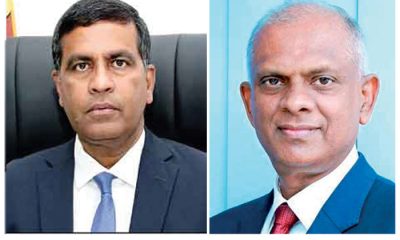
 News5 days ago
News5 days agoCID questions top official over releasing of 323 containers
-

 News2 days ago
News2 days agoMusk reveals ‘crazy waste’ of USAID funds in Sri Lanka
-

 Features6 days ago
Features6 days agoA singular modern Lankan mentor – Part II
-
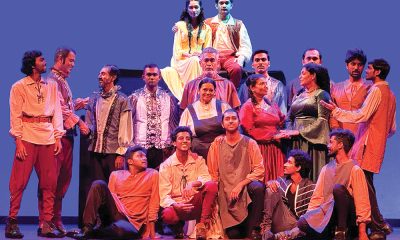
 Features6 days ago
Features6 days agoBharath Rang Mahothsav Parallel Festival in Colombo
-
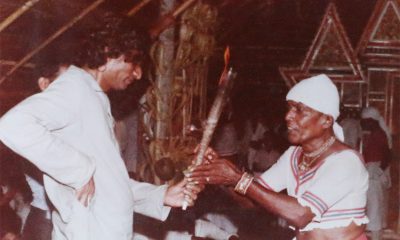
 Opinion5 days ago
Opinion5 days agoA singular modern Lankan mentor – Part III
-

 News5 days ago
News5 days agoHarry and Ken pass away
-

 News4 days ago
News4 days ago‘GovPay’, first step to digitalise government services
-

 Features5 days ago
Features5 days agoThe President’s Jaffna visit and its implications




